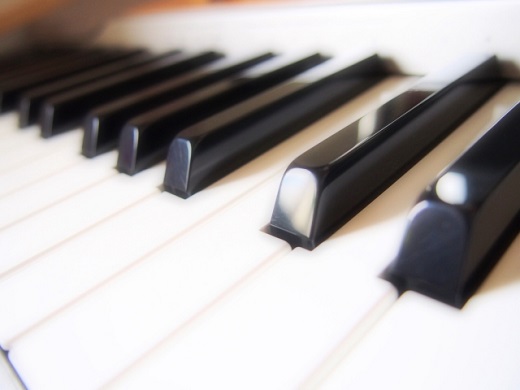
Chopin’s “Minute Waltz” (also known as “Valse du Petit Chien”) is an incredibly famous piece, isn’t it? Its light and cheerful melody makes it uplifting and delightful. However, when it comes to playing it, many find it surprisingly challenging. If that sounds like you, this article is a must-read!
Now, let me share how to play Chopin’s “Minute Waltz”, with my personal experiences sprinkled in to make it a fun and sneaky lesson!
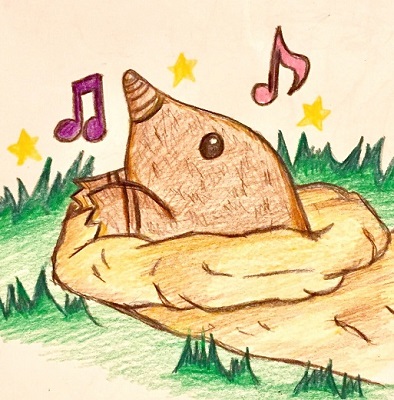
Hello!
First, let me introduce myself briefly—I’m Mole, a piano player. My mission is to help more people fall in love with the piano. While digging holes underground in the field, I teach piano in an easy-to-understand way. That’s just who I am, a music-loving mole.
Contents
The Difficulty Is Not as High as You Imagine!

Let’s dive into the main topic. The general difficulty level of the “Minute Waltz” is around intermediate. Specifically, if you can play pieces from the latter half of Czerny’s Op. 849 (30 Études) or the early part of Op. 299 (40 Études), you should be able to master this piece.
This article is mainly aimed at intermediate-level pianists who have some knowledge of piano and sheet music.
A Structure Full of Repetition!
Now, let me explain the overall structure of the piece. The term “structure” might sound intimidating, but the “Minute Waltz” is actually quite simple. Once you get through the first few pages, the rest is mostly repetition.First, take a listen to this video.
※In this video, the sectional repeats are omitted.
In this article, I’ll break the piece down into easy-to-digest sections to help you understand it better.
At first glance, it might seem daunting, but if you practice section by section, you’ll realize it’s not as difficult as it looks. Let’s tackle it one step at a time!
The times in parentheses correspond to the video above. Understanding the structure through the video makes practicing easier.
– Section A: (Start–0:17)
– Section B: (0:18–0:30)
– Section C: (0:31–1:00)
– Section A′: (1:01–1:20)
– Section B′: (1:21–end)
Now, let’s go through each section one by one.
Tips from Mole! How to Play
☆How to Play Section A ~The hardest part is just the beginning~
Here is the beginning of Section A.
The opening is played with the right hand only, but since a light and lively tone is required, it’s important to practice ensuring the evenness of the notes (making the volume of each note consistent).
“Molto Vivace” means “very fast,” and “leggiero” means “lightly and briskly.”
When I first tried practicing this piece, I thought, “Oh, it’s just the right hand here; I don’t need to practice this part!” I completely underestimated it.
However, the opening of a piece is quite significant, as it gives the audience their first impression of the performer’s skill.
To make a good first impression, take your time practicing even just the right hand, ensuring the notes are played evenly.
After the opening, the melody finally begins, and Section A features nearly identical phrases repeated twice. Each phrase spans 8 measures. In other words, once you master the first 8 measures, you’ve essentially conquered Section A.
As a general rule, begin by practicing slowly, alternating between the right and left hands individually. This approach applies to piano practice in general.
The key to playing Section A—and this applies to the entire piece—is to ensure the left hand doesn’t overpower the right hand.
If you can adjust the volume so that the right hand stands out, you’re good to go.
Additionally, while this might seem obvious, make sure to properly observe the rests and create moments of silence where indicated.
For a lively piece like this, ignoring the rests will make the performance sound sluggish, no matter how fast you play.
Conversely, even if your tempo is slow, adhering to the rests will produce a crisp, lively sound. Keep this in mind as you play.
There’s also an important point regarding the pedal.
When you press the pedal, the sound resonates, and you might feel, “Wait, am I sounding really good? I must be great!” Or is that just me? As a mole, I often find myself thinking that.
However, pressing the pedal too much will diminish the lightness and create a heavy atmosphere. This would sap the energy of the puppy in the music, so be mindful of this.
Naturally, the right hand also needs to convey a sense of lightness. As with the opening, achieving evenness in the notes will result in a more beautiful sound.
If you put in the effort to practice playing evenly during one-hand practice, you’ll find that the rest of the piece progresses surprisingly smoothly.
☆How to Play Section B ~Capturing the Mood of the Piece~
Next is Section B. It has a slightly uneasy atmosphere, don’t you think? (0:18~)In the initial part of the sheet music, play with a somewhat reserved tone. For this part, I imagine a scene of slight worry and aim to express it with softer dynamics. However, in the latter half, the worry seems to lift, and the light-hearted mood returns. For the right hand, just as in Section A, practice persistently until the notes sound evenly.
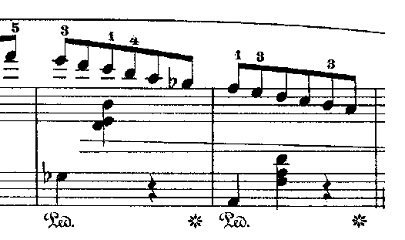
In this section, the right hand descends from the note “F” toward lower notes on the keyboard, bringing Section B to a close. Be mindful of your finger movements here. (0:27~)
This part is a bit challenging for me—I often fail to keep the notes even and end up playing in a rushed, sloppy manner. This usually happens when I attempt to play at an unrealistic speed. The key is to practice at a manageable tempo with the help of a metronome, maintaining a steady pace. Remember, never rush!
☆How to Play Section C ~Almost There~
Now, Section C takes a completely different tone compared to Section A and B. It’s romantic and serene, as if the puppy has tired itself out playing and is now napping. Huh? Is that not it? Well, I’ll leave the imagery up to your free and boundless imagination. (0:31~)Section C also features similar phrases repeated twice. While it’s primarily a repetition, the transitions between these repetitions vary slightly. Be sure to carefully review the entire sheet music and confirm each note.
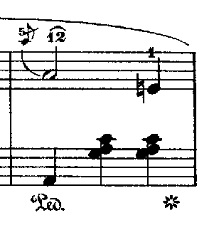
The ornamentations, as shown in the sheet music, should be played as subtly and delicately as possible. This will make the main phrases stand out, creating a beautiful resonance. The trick is to avoid putting too much strength into the fingers used for playing the ornamentations. (0:46~)
Toward the end of Section C, exaggerate the ritardando (meaning: gradually slowing down) to the point where you might think, “Isn’t this a bit too much?” By doing so, the next section will stand out even more prominently.
☆How to Play Section A’ and Section B’ ~ Almost Repeats ~
Section A’ (1:01~) and Section B’ (1:21~) can be considered as repeats of the initial Section A and Section B. The notes and playing style are almost the same, so by now, you’ve pretty much mastered them.That said, there are still a few points to note.
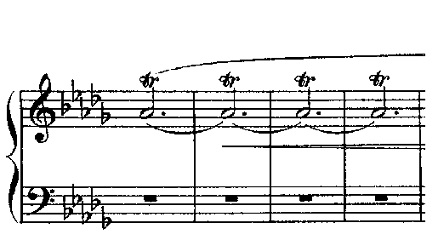
As shown in the sheet music, an extended trill appears.
“Oh no… a trill? That seems difficult.”
If you feel this way, you’re not alone—I’m not very good at trills either. It’s hard to keep the notes evenly balanced, and when one note stands out, the sound doesn’t resonate beautifully.
But there’s no strict rule about how many notes a trill must contain within a beat. In other words, you can play it freely. Even if the number of notes is fewer, there’s no right or wrong—it’s entirely up to you.
Personally, I aim to make playing a lot of notes quickly the ultimate goal. First, I focus on practicing at a slow tempo to even out the volume of each note and make the sound uniform. Once you’re comfortable, you’ll naturally be able to play faster.
The key to making trills sound beautiful is to relax your wrist, arm, and shoulder, and focus that relaxed energy into your fingertips. Practice slowly at first with this approach in mind. Once you’re used to staying relaxed, gradually increase the tempo. By eliminating unnecessary tension, your hands and arms won’t hurt, and you’ll notice how much more beautiful the resonance becomes.
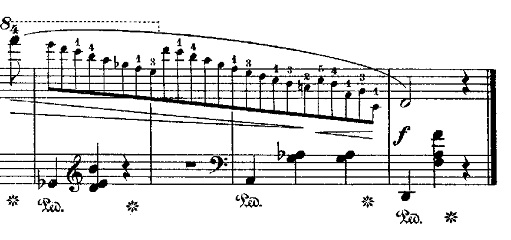
Now, the final section may look daunting at first glance. It might seem overwhelming for those who struggle with many intricate notes. (1:44~)
But it’s nothing to worry about. Take a closer look at the sheet music, and you’ll see it’s simply the final phrase of Section B raised by one octave, making the notes higher. Just as you practiced the final phrase of Section B, use a metronome to practice slowly and carefully, and you’ll be able to play it without any trouble.
Let’s Review! Summary of Playing Tips
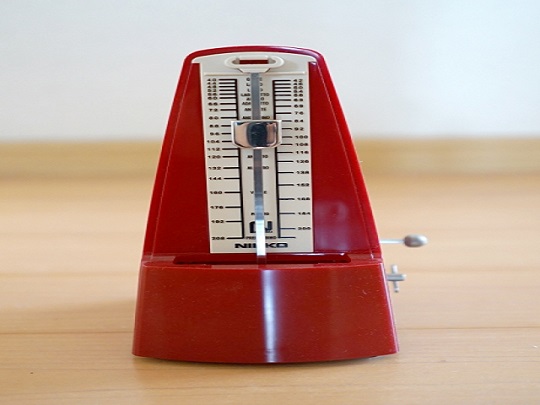
Finally, here’s a summary of the key points for playing Chopin’s “Minute Waltz” effectively:
- Play lightly without becoming heavy (especially in Section A, Section B, Section A’, and Section B’).
- Practice each hand slowly and thoroughly with patience (throughout the piece).
- Always maintain evenness in the right-hand notes (especially in Section A, Section B, Section A’, and Section B’).
- Ensure the left hand does not become overpowering (throughout the piece).
- Use a metronome to maintain a steady tempo and gradually increase the speed (especially in Section B, Section C, and Section B’).
- For trills, relax your wrist, arm, and shoulder, and focus the energy on your fingertips (especially in Section A and Section A’).
- Avoid overusing the pedal (especially in Section A and Section A’).
- Rather than attempting the entire piece at once, practice in small sections, dividing it into manageable parts (throughout the piece).
As you practice while referring to these tips, you’ll gradually develop your own interpretation of the piece.
Good luck with your practice! I’m cheering for you from underground!
- IMSLP (Sheet Music Link)
This article was created using this score, a public domain sheet music published by Schirmer in 1915. - Mutopia Project (Sheet Music Link)
A recently formatted and clean public domain sheet music.
- Perfect for a Piano Recital! Chopin's “Minute Waltz”: Difficulty and 3 Tips for Playing It 2017/5/25
- How to Master Chopin's “Minute Waltz”: 8 Essential Tips and Difficulty Insights from a Mole 2017/7/6 ←Currently Viewing Article
- 子犬のワルツ。ショパンの名曲のかんたんな弾き方、難易度も解説。(ワルツ第6番変ニ長調Op.64-1) 2018年3月9日
- ショパン作曲『子犬のワルツ』の難易度は?弾き方を極める7つのコツ 2019年8月1日
- Ranking Chopin’s Waltzes by Difficulty: A Piano Teacher’s Perspective 2017/3/17
- Perfect for a Piano Recital! Chopin's “Minute Waltz”: Difficulty and 3 Tips for Playing It 2017/5/25
- How to Master Chopin’s “Grand Valse Brillante”: Difficulty Level and Essential Waltz Techniques 2017/6/2
- Play with Fingerings That Suit You! Chopin’s “Grand Valse Brillante” Difficulty and Tips for Playing 2017/6/29
- How to Master Chopin's “Minute Waltz”: 8 Essential Tips and Difficulty Insights from a Mole 2017/7/6 ←Currently Viewing Article
- これで挫折知らず!ショパン『ワルツ第7番op64-2』弾き方のコツと難易度 2017年7月14日
- 華やか&叙情的!ショパン『ワルツ第14番ホ短調遺作』弾き方のコツと難易度 2017年8月6日
- ロマンティックな恋!ショパン『ワルツ第9番op.69-1』の弾き方と難易度(『別れのワルツ』『告別』) 2017年11月8日
- 華やかなワルツの世界!ショパン「華麗なる大円舞曲」弾き方と難易度 2017年12月6日
- 初めてショパンを弾く人へ!『ワルツ第10番op.69-2』の弾き方と難易度 2017年12月16日
- 子犬のワルツ。ショパンの名曲のかんたんな弾き方、難易度も解説。(ワルツ第6番変ニ長調Op.64-1) 2018年3月9日
- おすすめしたい隠れた名曲!ショパン:ワルツ第15番ホ長調遺作の弾き方と難易度 2018年3月19日
- 一音入魂!ショパン:ワルツ第3番(華麗なる円舞曲)の難易度と弾き方(Op.34-2イ短調) 2018年5月19日
- ショパン作曲『子犬のワルツ』の難易度は?弾き方を極める7つのコツ 2019年8月1日


















